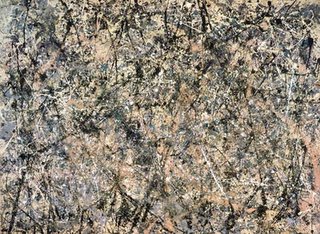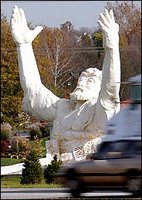
This summer, Topics students talked a little about whether or not it was a good idea for artists to begin exhibiting while they are still in grad school. The panel at the beginning of the summer - and the article in the New York Times about "hot" grad programs had no doubt gotten a few people thinking, but when I saw an interview with Chuck Close (whose self-portrait appears at right - see, we're getting all artblog with the images!) in the current CAA News, I thought I should post a little bit for everyone to consider.
What do you think of students exhibiting their work before they graduate?
Part of the problem is that schools require students to make consistent work instead of encouraging them to bash around and try a lot of different ideas and different styles. Young artists should resist zeroing in on their vision so early…
I absolutely believe and always have believed that artists shouldn't go public with work until they are ready to lay their necks on the line - which means that anything an artist did before going public is nobody's business. But the minute you decide to go public, an artist sets a specific trajectory and seems to truncate other options. I think it is really good to bang around for a while and really be sure you can love with the work that you make for a long time before you decide to show it.


